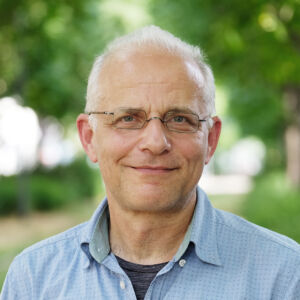"Suffizient wohnen in der Nachfamilienphase - Umrisse eines sozial-ökologischen Begrenzungskonzepts"
Immanuel Stieß et al.
Available online
The project is investigating how underused single-family homes in rural areas can be used more efficiently and adapted to demographic changes.
In many municipalities, in particular in rural areas, the population is shrinking. As a result, residential patterns and the demand for living space are changing. Together with the district of Steinfurt, researchers are developing strategies to adapt underused dwellings to the new needs and requirements induced by demographic change.
The aim is to more efficiently use detached and semi-detached houses. For single-family houses this might mean the separation of a lodger flat the rent of which could help finance energetic and barrier-free refurbishments. The exchange of apartments is also conceivable if this corresponds with the respective needs of the future users. The district of Steinfurt is project partner. With the support of the association “energieland 2050 e.V.” Steinfurt is currently creating an innovative advisory service offering restructuring consultation and practical help like relocation support in selected municipalities.
In order to develop these new services to suit the requirements of the municipalities, the scientists analyze the particular framework conditions in shrinking as well as growing municipalities of the district. ISOE is investigating the demographic development within the district and will conduct a survey on the residents’ needs and willingness to move. On this basis ISOE aims to design a communication concept to address the local inhabitants.
With the help of an accompanying monitoring and an evaluation, the research network determines success factors and hindrances. Furthermore it assesses the effects of measures on housing satisfaction, land usage, heating energy demands and greenhouse gas emissions. The transferability to other regions will be estimated and the experiences will be discussed with interested municipalities in existing inter-district networks.
In many rural municipalities single-family houses in former developing areas have retained the standard of the 1960s and 1970s and are in need of refurbishment. Due to shrinking household size, living space per capita is increasing. Dwellings that were originally designed for families are now often only used by one or two persons. Many home owners find it too expensive to carry out thermal refurbishment of their buildings, and thus the municipal climate protection goals are getting in danger. In other words, single family homes in need of refurbishment are underused while simultaneously there is a lack of housing space for young families and big households. As a consequence, municipalities are under pressure to open up new housing areas in order to comply with this demand. They have to carry high development costs and urban sprawl with all is ecological disadvantages increases. In the face of a shrinking population, an excess supply of housing areas in the future will thus be created. The research project examines how the existing Housing stock can be upgraded, how it can be used in more efficient ways, and be better adapted to users’ needs.
The research project “LivingSpaces – Instruments for a needs-orientated usage of the housing stock in municipalities” is funded as part of the BMBF-funding measure “municipalities innovative”.
Immanuel Stieß et al.
Available online
Angelika Paar
Available online
Corinna Fischer, Immanuel Stieß
Available online
Immanuel Stieß, Anja Umbach-Daniel, Corinna Fischer
Available online
Corinna Fischer, Immanuel Stieß
Available online
How much do we really need for a good life? Which services and infrastructures enable a sufficient standard of living, consumption, or nutrition?
Go to Topic Page
